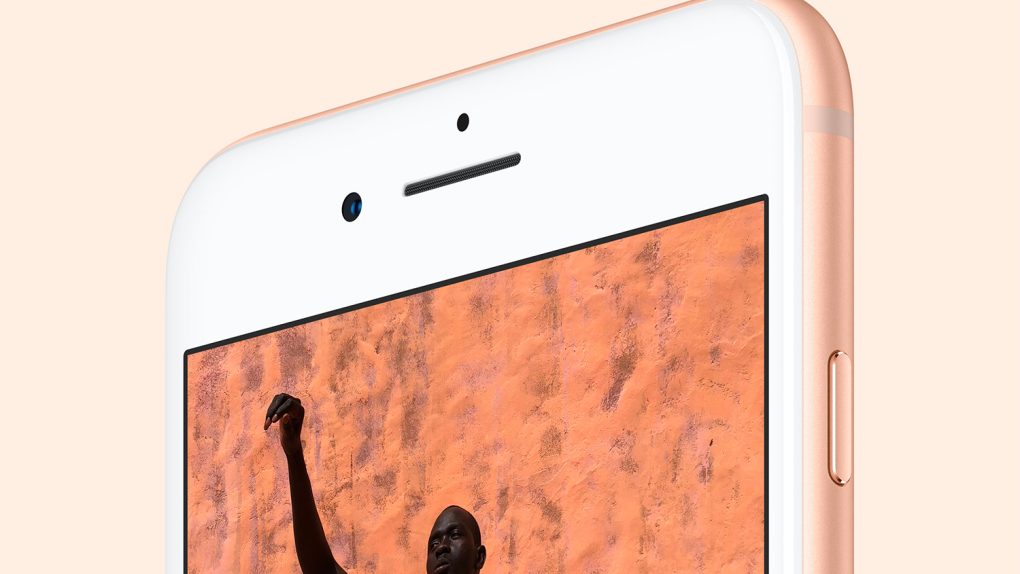Let’s say you have an iPhone 7 or an iPhone 6s, what are the benefits of upgrading to the iPhone 8? It’s an important question that Apple has curiously and clumsily failed to answer. Sure, tech heads who intently watched Apple’s keynote last week can spout off specs for days, but the case for upgrading to the iPhone 8 for the regular iPhone user is unusually murky. Now this isn’t to say that the iPhone 8 isn’t a worthy upgrade, but rather that Apple has done incredibly underwhelming job of informing the masses why the iPhone 8 is a worthy successor to the iPhone 7.
Sometimes, a new iPhone sells itself with minimal effort from Apple. Take the iPhone 6, for example. The impetus to upgrade to the iPhone 6 was clear: a brand new form factor. The iPhone 5s is yet another example of a phone that simply sold itself. After all, with Touch ID as a brand new feature at the time, the reason to upgrade was abundantly clear. The iPhone 8, in stark contrast, lacks a new form factor and a singular flagship feature.
That being the case, the onus was and remains on Apple to tell users why the iPhone 8 is a worthy successor to the iPhone 7. Apple, though, hasn’t risen to the challenge. Even worse, it seems as if Apple hasn’t even been trying.
Now you would think that going to Apple’s iPhone 8 page would provide prospective buyers with an easy-to-digest guide about all of the iPhone 8’s great new features. Alas, Apple’s iPhone 8 page is uncharacteristically convoluted and laden with tech verbiage.
Somewhat bizarrely, the first thing Apple touts about the iPhone 8 is its new all-glass design.
“The most durable glass ever in a smartphone, front and back,” Apple’s website reads. “A color‑matched, aerospace‑grade aluminum band. New space gray, silver, and gold finishes.”
Why is Apple leading off with this? Do everyday consumers care about the iPhone’s new glass design? Is this a selling point in and of itself?
Next, Apple boasts that the iPhone 8 is “precision‑engineered to resist water and dust.” Is this interesting news? The iPhone 8 features a water resistance rating of IP67, the exact same rating the iPhone 7 enjoys. Sure, it’s important to let consumers know that the iPhone 8 is impervious to water and dust, but again, why is this one of the things Apple is leading off with?
Following that, Apple finally gets to a compelling new feature: wireless charging. While wireless charging has been a staple on some Android smartphones for years, it’s nice to see Apple finally joining the party. Only problem is, Apple doesn’t tell us anything else about the wireless charging experience. How fast is wireless charging on the iPhone 8? How much are compatible charging mats? Where can they be purchased? Alas, if you want answers to those basic questions, you have to go digging around Apple’s website on your own.
Now you may think this is a joke, but I can assure it isn’t: the next iPhone 8 feature Apple touts is a louder speaker. Again, it’s a nice perk, but louder speakers aren’t exactly enough to move the needle. And what does Apple opt to advertise next? Why Touch ID of course. How brilliant of Apple to advertise a feature that’s been omnipresent on the iPhone since 2013 instead of putting the iPhone 8’s new features front and center.
Moving along, Apple finally gets to something worth mentioning — the iPhone 8’s new Retina HD display. Still, even here Apple’s advertising efforts fall short.
Apple notes that the new iPhone 8 display features the following:
A Retina HD display that’s more beautiful than ever. With True Tone, a wide color gamut, and 3D Touch.
True Tone technology automatically adjusts white balance to match the light around you. For a better viewing experience in all kinds of environments.
With a wide color gamut and the best color accuracy in the industry, everything on the screen looks more brilliant and vibrant.
Dual‑domain pixels give you a great view of the screen from almost any angle.
Now this all well and good, but it really amounts to nothing more than marketing speak for most users. The average iPhone user probably hasn’t heard of True Tone technology and Apple doesn’t make it clear how the iPhone 8 display is fundamentally different from the iPhone 7 display. If Apple wants to encourage upgrades, it needs to do a much better of job of articulating the benefits of upgrading.
Perusing the rest of the Apple’s iPhone 8 webpage is simply more of the same. Even the new A11 Bionic processor — which is an absolute screamer — falls victim to verbiage that is seemingly geared exclusively for techies.
Introducing A11 Bionic. With four efficiency cores that are up to 70 percent faster than A10 Fusion. And two performance cores that are up to 25 percent faster.
Does Apple really expect the average iPhone user to appreciate the A11 Bionic with this description? Apple also adds:
A second‑generation performance controller provides more power when you need it. While delivering the same great battery life.
Again, this is just a lazy job from Apple.
Truthfully, does this ad make you excited about the iPhone 8?
https://www.youtube.com/watch?v=k0DN-BZrM4o
In truth the Phone 8 is, in fact, a solid upgrade from the iPhone 7. It’s just a shame that Apple has done a rather poor job of letting everyone else know why.








